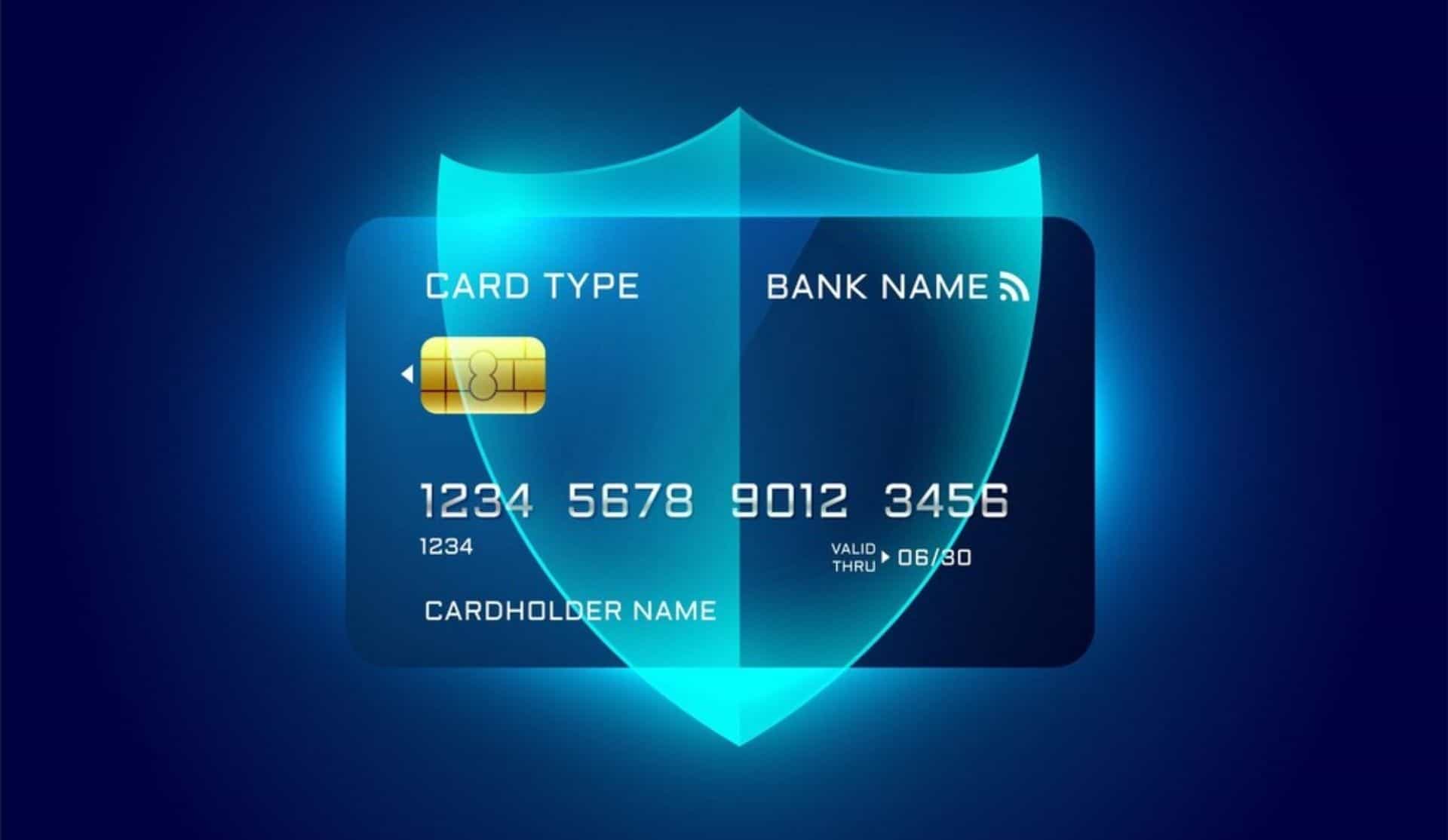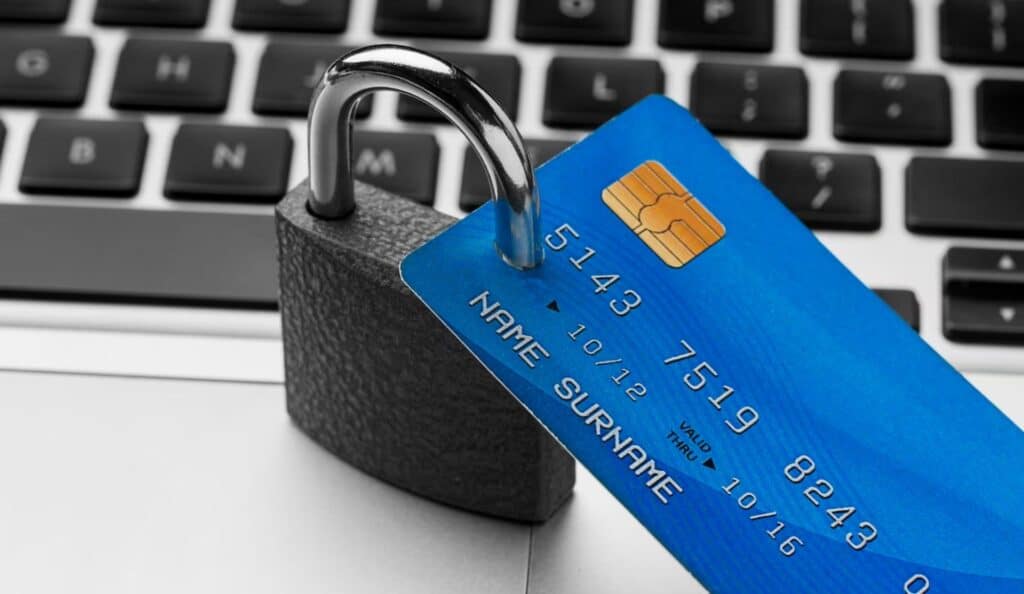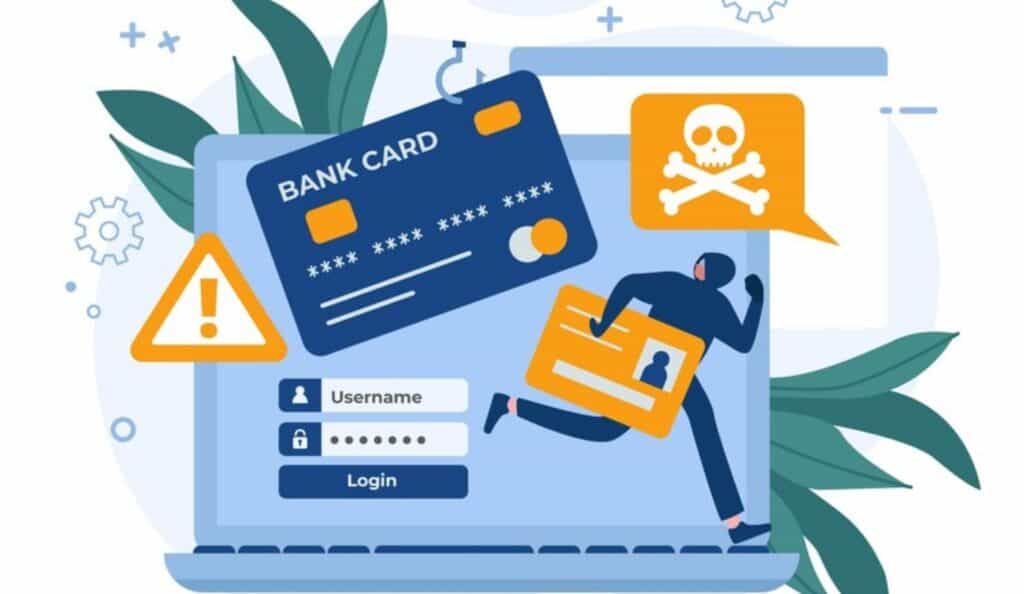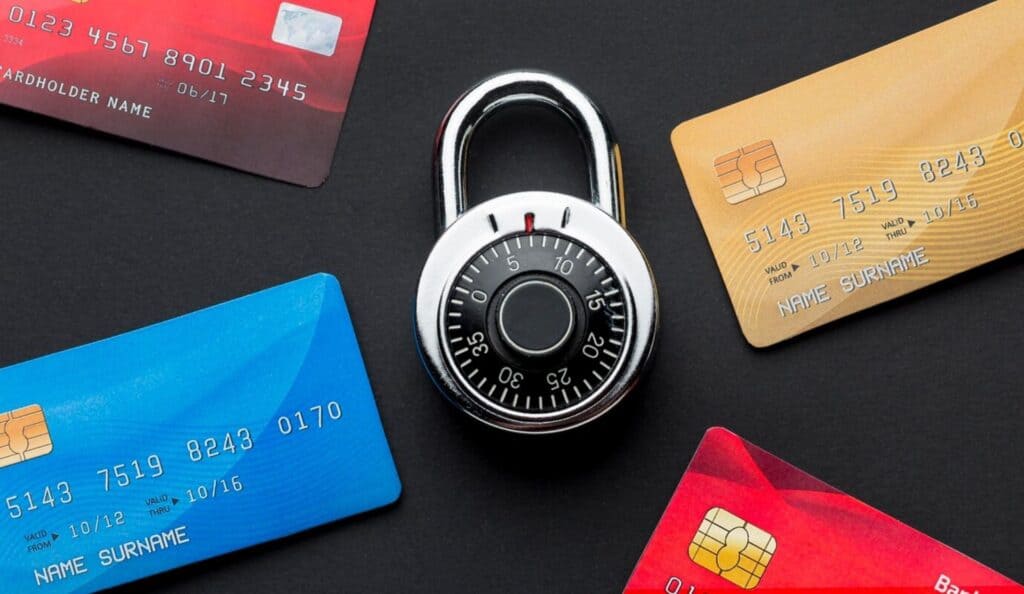
By Katherine Robertson April 8, 2025
Card security codes assist in minimizing credit and debit card fraud. The numbers are used to confirm the identity of the cardholder in transactions, particularly in phone and online purchases. In contrast to the card number, stores don’t hold on to these codes, thus offering extra security against the misuse of these codes.
Different card issuers, including Visa, Mastercard, and American Express, display these security codes differently. Knowing how these codes work and how to protect them can help people keep their financial information safe.
What is Credit Card Security?

A credit card security code is a few digits that prevent fraud. When you enter this code, along with your credit card number and expiration date, it is sent to the card company to verify whether it’s correct. If it is, your payment is approved immediately. Various types of cards use different terms for this code. For instance, Visa refers to it as CVV2, Mastercard as CVC2, Discover as CVD, and American Express as CSC or CID.
The code is on your card and is not saved online or in your statements. Stores will sometimes request it when you purchase something online or over the phone to ensure that the cardholder is the person paying. For security, businesses can’t retain these codes following a purchase. This protects the customers from fraud because even if a person takes card numbers, they cannot use them without the security code.
History of Credit Card Security
Equifax developed credit card security codes in the late 1990s to secure online payments. Gradually, all big card companies adopted them, but they have a little different format. Visa, Mastercard, and Discover use a three-digit code on the back of the card, and American Express uses a four-digit code on the front.
These codes are used to verify transactions and prevent fraud. Mastercard and Visa append a “2” at the end of their codes so that they can be distinguished from other security information on the card. Because these codes are only on the real card, shops use them to ensure the purchaser has the card when purchasing an item. This additional security prevents unauthorized payments and keeps credit card transactions secure.
Why are Credit Card Security Codes Important?
Security codes protect your credit card information by ensuring you possess the card when you purchase something. CVV codes can’t be stored by stores, so if you lose your card number, the thief can’t use it because they won’t have the security code. It becomes more difficult for fraud to occur but not impossible, particularly if a store’s computer system becomes compromised or someone duplicates your card details.
Nevertheless, credit cards are among the safest methods of paying since security codes render it difficult for someone else to use your card without your consent. Because this detail is not stored, hackers cannot obtain it from a store’s database, which provides added security for online and phone transactions. Aiming for caution when you enter your security code somewhere and not revealing it to anyone can ensure your financial data is protected.
Where to Find the Card Security Codes?

Card security codes are unique numbers appearing on credit and debit cards to deter fraud. Various card networks refer to this security element differently and locate the code differently. Visa, Mastercard, and Discover use a three-digit code that is printed on the card back, close to the signature box. American Express employs a four-digit code printed on the front of the card, above the card number. These codes assist in authenticating transactions and verifying that the card is in the hands of the individual paying.
Some banks are testing dynamic security codes, which shift automatically at regular intervals, like every hour. This technology would make fraud even more difficult, but it is not used extensively as yet. Card security codes are still a significant means of safeguarding online and phone payments against unauthorized transactions. Keeping this code confidential guarantees secure purchases and minimizes the threat of fraud.
Purpose of the Credit Card Security Number
A card number is a number that connects a credit or debit card to a bank account. Card numbers assist banks in tracking and verifying transactions. When a person wishes to purchase something, the card number assists the bank in locating the correct account for the payment.
Permanent card numbers also enable stores to process payments. When a store accepts a credit, debit, or prepaid card, the card information is sent to the bank for verification and approval. Stores can store card numbers so they can process future payments automatically, without the cardholder having to authorize each time.
How Are They Used in Transactions?
If a seller accepts payment without viewing the card, then they should request the Card Security Code (CSC) where a Credit card authorization code is generated to check if the customer possesses the card. This prevents fraud and protects payments.
One major issue with Internet shopping is that card numbers may be sent and stored on networks that are not completely secure. Credit card numbers can be stolen by hackers through attacks on seller systems, allowing them to use stolen numbers for counterfeit purchases.
CSC codes should not be stored using the credit card number. Rather, they are sent securely to the card company for verification. When the issuer indicates that the CSC is consistent with the account number and all else is fine, the payment is approved securely.
Some transactions may be processed without verifying the CSC, but it’s risky. If a cardholder contests a charge, the seller won’t have documentation that the customer possessed the card. That allows fraud to occur more easily, and sellers could be out of money in disputes. Proper use of CSC codes prevents both sellers and customers from being defrauded.
Security Issues
A Card Security Code (CSC) serves as a password, making your credit card secure if you maintain it safely. Thieves are able to steal physical cards or obtain CSCs if card members give them, write them down, or send them to counterfeiters. A criminal who receives both the card number and CSC can use the card on the internet until the actual owner is aware and makes a report.
In order to prevent fraud, merchants incorporate additional security measures such as anti-fraud filters and multi-factor authentication. A few contactless cards and wallets generate dynamic security codes to offer additional protection. These dynamic CSCs render fraud significantly more difficult, but the facility is not present on all cards, and a few others retain a static CSC that is usable. Preventing fraud and unauthorized transactions through secure card holding keeps your card safe.
Keeping Credit Card Security Codes and Information Secure

Protecting your credit card details is more crucial than ever with internet shopping and social media shaping more transactions. One of the things that will help to avoid fraud is asking customers to input their card security code (CSC) when paying. Yet, the code must be known only to the cardholder to keep it secure.
To safeguard your card, pay securely using a digital wallet, chip, and PIN, or a virtual credit card number. Do not lend your credit card to anyone or leave it in public. Before making purchases online, ensure websites are secure by ensuring the address begins with “https” and there is a lock icon beside the URL.
Don’t enter your credit card information using public computers or internet access, as hackers can access it. Also, never provide your card information to someone who calls you, even if their phone number appears right, as scammers can manipulate caller ID. Always make a call to the merchant yourself when paying by phone.
Moreover, ensure your credit card is not visible in pictures you share on the internet. If you have card information stored on your phone, lock it automatically and secure it with a robust password or fingerprint recognition. Leverage security features provided by your card issuer, such as credit monitoring and alerts for suspicious activity.
If you believe your card details have been stolen, inform your card issuer immediately so they can issue you a new card and stop further fraud. Remembering these tips will ensure your payments are secure and your financial details are safe.
Conclusion
Card security codes are important for keeping credit and debit card transactions safe, especially when shopping online or over the phone. These special numbers help confirm who the cardholder is and lower the chance of fraud. Merchants cannot keep these codes, so if card details are stolen, the code stays private, adding extra safety.
Knowing where to find these codes, how they work, and how to keep them safe helps ensure secure transactions and protects financial information. By using safe payment methods, keeping security codes secret, and following good practices to avoid fraud, cardholders can lower risks and keep their finances safe. As technology improves, new methods like changing security codes may make card safety even better, making fraud harder. Staying informed and careful is always the best way to protect personal and financial information.